The fly-by overview of our trip.
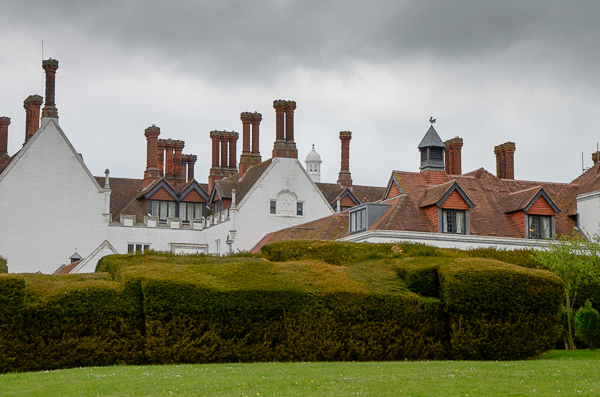
On our first day we flew to Heathrow where we were collected by a driver who took us to Danesfield House. Members of our group trickled in throughout the day. Those who came in early, such as ourselves, could walk around the extensive gardens to fend off jet-lag.
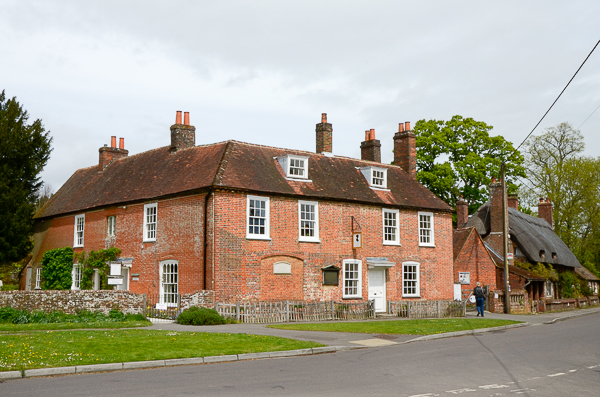
It was the 200th anniversary of the publication of Pride and Prejudice, and our trip schedule celebrated Jane Austen. It was a major attraction of this program for a long-time Austen fan. We had previously visited Austen's grave in Winchester and many of her haunts in Bath.
There was an alternate expedition to naval sights in Portsmouth that would have otherwise been tempting, but it could not compete with an excursion to Chawton Cottage, where Austen either wrote or revised all her published works!
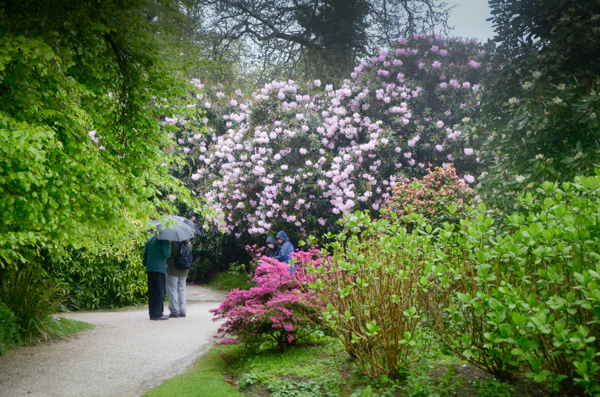
Jim had visited Heligan Gardens the previous fall when we were on a hiking tour of Cornwall. He was enthusiastic both about what he saw and the story behind the gardens.
The gardens had been the pet project of the Tremayne family for almost two hundred years, but they deteriorated after many of the gardeners failed to return from WWI. The owner moved to Italy and leased the manor. By the 1950s the gardens had been abandoned. Not long afterwards the manor was divided into condominiums and sold. In the 1990s, however, the gardens were rediscovered and restored. Many of the older plantings survived and the meticulous records allowed others to be recreated. We were delighted to visit these gardens -- even in the rain.
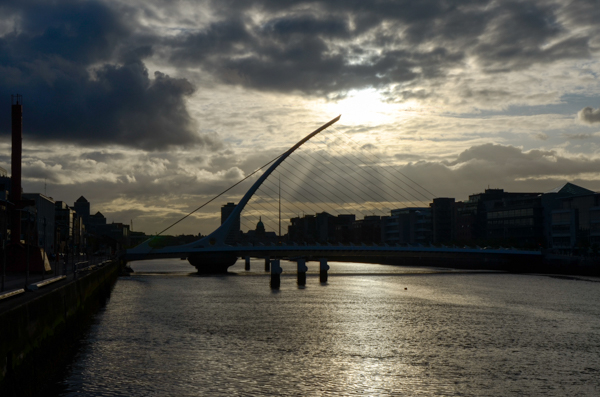
After leaving Cornwall, we spent a day crossing the Irish sea to Dublin. Our blustery day at Heligan had been the leading edge of a major storm system so it was a rough trip. Jim isn't bothered by sea-sickness and I was fortified by "the patch" so we did OK.
Our stateroom was in the bow of the ship, however, and no amount of chemistry can alleviate the booming of the sea through the scuppers, the rattling of the hangers in the closet, or the miscellaneous creaks and groans of a ship in heavy seas. Not to mention the occasional object falling over. We didn't get a lot of sleep.
During the day at sea we listened to lectures from our other traveling professors: Alastair Minnis of Yale and Daniel Albright of Harvard. Alastair spoke on how poets and poetry reflected (and still reflect) the struggle for Irish independence. Daniel gave us a selection of poems associated with the sea.
In the evening we arrived at Dublin and tied up in the Liffey River running through the city.
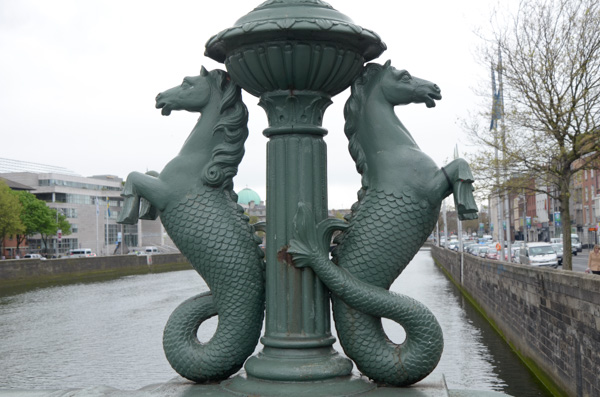
We had signed up for an excursion that would have taken us into the Irish countryside to Newgrange, but not enough people chose that option and it was cancelled. The remaining excursion was a bus tour of Dublin.
We started the day at Trinity University where we saw the Book of Kells. Our next stop was the National Museum. Among the fascinating exhibits were several bog bodies. These remarkably preserved remains appear to have suffered ritual sacrifice. In the afternoon we visited St. Patrick's Cathedral.
After the stop at the church (it isn't really a cathedral), we decided against the shopping stop and walked back to the ship along the river. One of the bridges had these sea horse details.
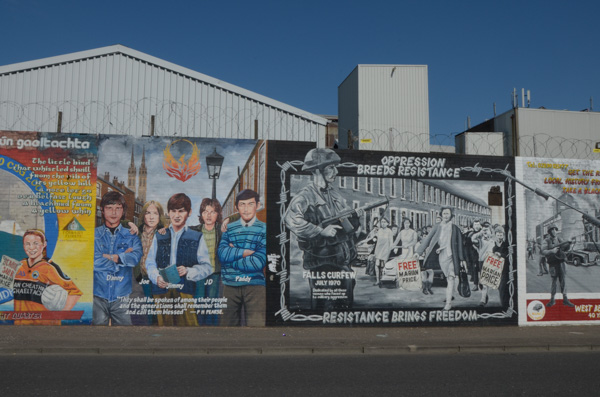
The next morning we arrived in Belfast -- still a city in conflict. Even though the "Republican" and "Unionist" sides aren't lobbing bombs at each other, there is still plenty of mistrust and tension.
Dr. Cathy Gormley-Heenan and Dr. Jonny Byrne of the University of Ulster came to the ship and spoke of the research they had done on the perspectives and attitudes about the so-called peace walls both among the general population and those who live in the immediate neighborhoods. The bottom line is that the people most directly affected are still afraid of violence in their neighborhoods. Oddly, many view the walls as a tourist attraction and thus an economic benefit. Well, perhaps that's not so odd – we toured them didn't we?
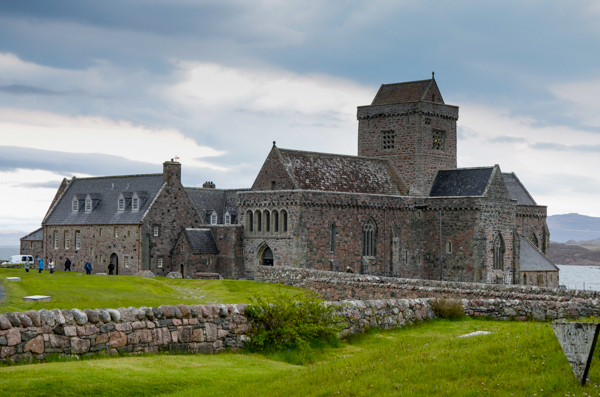
Our next stop was Iona, now home of the Iona Community. We use a number of the worship materials produced by the community in our church.
St. Columba and his followers settled the island and lived in a collection of huts around a modest place of worship. Monks constructed an abbey in the 13th century on the site of Columba's original church. Monasteries disbanded during the Scottish Reformation in the 16th century and the abbey deteriorated. The current structure was built in the early 20th century.
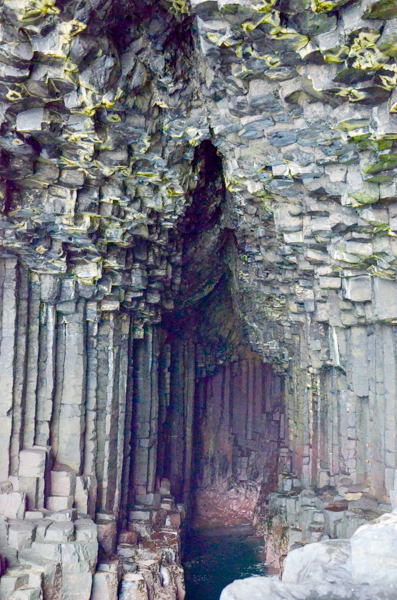
The afternoon included a stop at Staffa, the locations of Fingal's Cave. Any place this striking would have to create a legend. Check out the link for a brief overview of both legend and geology.
It is easy to see why the cave has inspired so many artists. The photo cannot include the sound of the sea within the cavern.
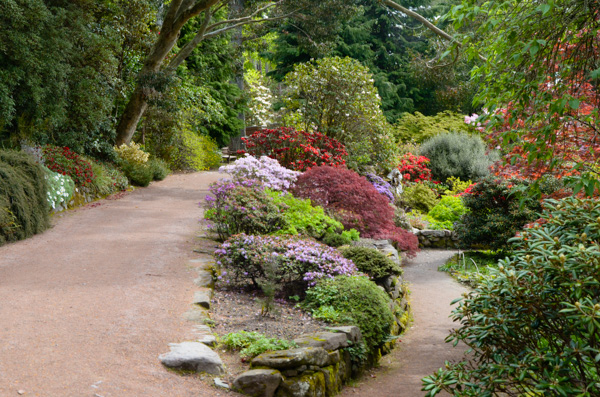
It wasn't until after we visited the beautiful garden at Inverewe that I decoded the pronunciation of the name. We learned that "Inver" means "at the mouth of." The garden is at the mouth of the Ewe river. So instead of being pronounced something like "in-ver-ary," it is pronounced "inver-ewe." By any name it would be lovely. To find out more about it, check the National Trust of Scotland web site. You will need to search for Inverewe to get to the description of the garden. It has pictures in other seasons.
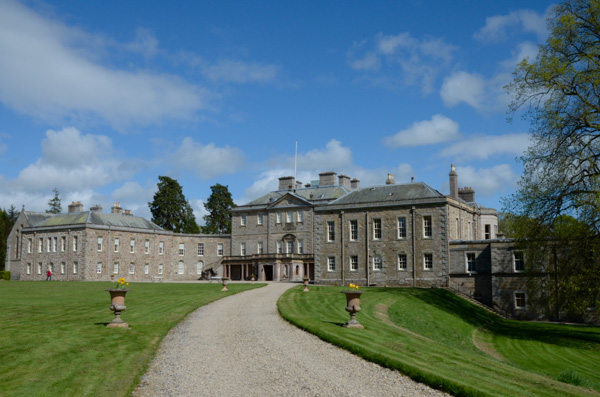
After a day at sea we arrived in Aberdeen. Following a morning tour of the city, in the afternoon we headed into the Scottish countryside. Haddo House was designed by William Adam in the early 18th century. The Gordon family has lived on the property for over 500 years.
The Gordons were originally baronets then earls and are now marquesses. That's some social climbing! There is an extensive art collection in the house including a series of 85 watercolors of every castle in the area.
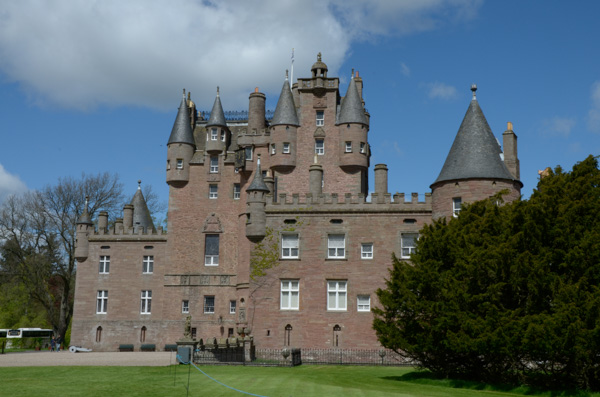
The next day we arrived at Dundee.
Our excursion for the day was to Glamis (pronounced glahms) Castle.
Glamis is a story-book castle. It was the childhood home of Queen Elizabeth II's mother and is still the home of the Earl of Strathmore. According to Shakespeare, Macbeth was Thane of Glamis, but in fact Macbeth lived two centuries before there WAS a Glamis estate. Don't go to Shakespeare for your history. He was an artist and entertainer.
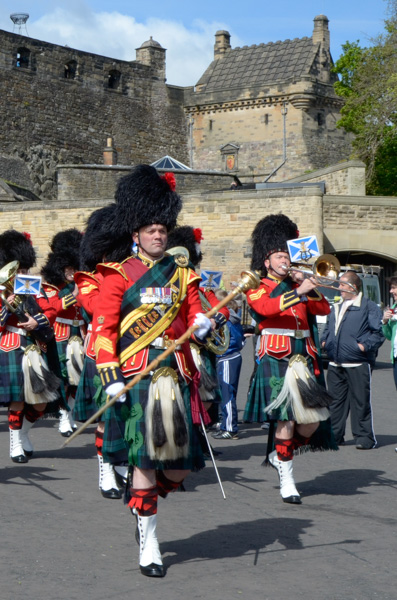
Our visit to Edinburgh went by in a blur. There was so much to see and very little time.
For the past several years there has been no hourly changing of the guard at Edinburgh Castle except on special occasions. We were lucky to be visiting on one of those occasions: the annual general assembly of the Church of Scotland.
We hope that this quick overview is an inspiration to check out the detailed pages.
Click your "back" button to return to the previous page or click for our picture album.